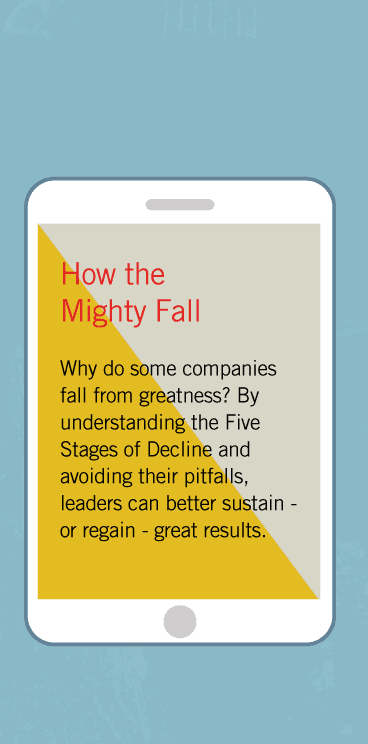First Who – Get the Right People on the Bus
We found something quite the opposite.
The executives who ignited the transformations from good to great did not first figure out where to drive the bus and then get people to take it there. No, they first got the right people on the bus (and the wrong people off the bus) and then figured out where to drive it. They said, in essence, “Look, I don’t really know where we should take this bus. But I know this much: If we get the right people on the bus, the right people in the right seats, and the wrong people off the bus, then we’ll figure out how to take it someplace great.”
The good-to-great leaders understood three simple truths. First, if you begin with “who,” rather than “what,” you can more easily adapt to a changing world. If people join the bus primarily because of where it is going, what happens if you get ten miles down the road and you need to change direction? You’ve got a problem. But if people are on the bus because of who else is on the bus, then it’s much easier to change direction: “Hey, I got on this bus because of who else is on it; if we need to change direction to be more successful, fine with me.” Second, if you have the right people on the bus, the problem of how to motivate and manage people largely goes away. The right people don’t need to be tightly managed or fired up; they will be self-motivated by the inner drive to produce the best results and to be part of creating something great. Third, if you have the wrong people, it doesn’t matter whether you discover the right direction; you still won’t have a great company. Great vision without great people is irrelevant.
Consider the case of Wells Fargo. Wells Fargo began its fifteen-year stint of spectacular performance in 1983, but the foundation for the shift dates back to the early 1970s when then-CEO Dick Cooley began building one of the most talented management teams in the industry (the best team, according to investor Warren Buffett). Cooley foresaw that the banking industry would eventually undergo wrenching change, but he did not pretend to know what form that change would take. So instead of mapping out a strategy for change, he and chairman Ernie Arbuckle focused on “injecting an endless stream of talent” directly into the veins of the company. They hired outstanding people whenever and wherever they found them, often without any specific job in mind. “That’s how you build the future,” he said. “If I’m not smart enough to see the changes that are coming, they will. And they’ll be flexible enough to deal with them.”
Cooley’s approach proved prescient. No one could predict all the changes that would be wrought by banking deregulation. Yet when these changes came, no bank handled those challenges better than Wells Fargo. At a time when its sector of the banking industry fell 59% behind the general stock market, Wells Fargo outperformed the market by over three times.
Carl Reichardt, who became CEO in 1983, attributed the bank’s success largely to the people around him, most of whom he inherited from Cooley. As he listed members of the Wells Fargo executive team that had joined the company during the Cooley-Reichardt era, we were stunned. Nearly every person had gone on to become CEO of a major company: Bill Aldinger became the CEO of Household Finance, Jack Grundhofer became CEO of U.S. Bancorp, Frank Newman became CEO of Bankers Trust, Richard Rosenberg became CEO of Bank of America, Bob Joss became CEO of Westpac Banking (one of the largest banks in Australia) and later became dean of the Graduate School of Business at Stanford University—not exactly your garden variety executive team! Arjay Miller, an active Wells Fargo board member for seventeen years, told us that the Wells Fargo team reminded him of the famed “Whiz Kids” recruited to Ford Motor Company in the late 1940s (of which Miller was a member, eventually becoming president of Ford). Wells Fargo’s approach was simple: you get the best people, you build them into the best managers in the industry, and you accept the fact that some of them will be recruited to become CEOs of other companies.






